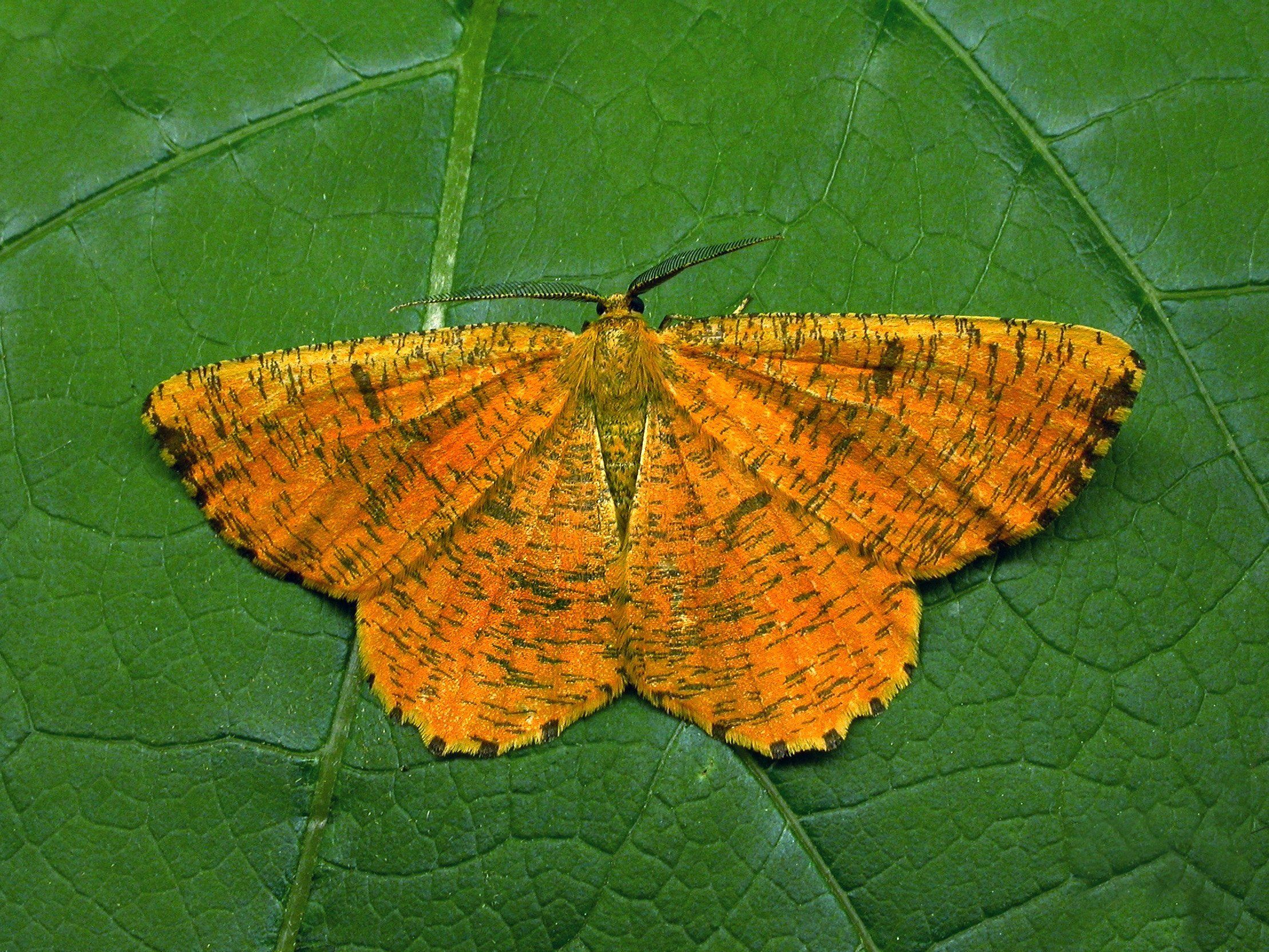Down To The Woods
You wouldn’t normally expect to find a Lobster in your local park, but if you go down to the woods this summer, you could be in for a big surprise, says Liam Creedon
Woodland wouldn’t necessarily be your first port of call when looking for a lobster.
But amid the UK’s woods, forests and glades lurks a truly extraordinary moth that bears an uncanny likeness to the famous and decidedly more palatable crustacean.
The adult Lobster moth is, on the face of it, a rather unprepossessing beast. Brownish-grey, furry and only revealing itself at night, it is not generally regarded as a moth to stir the imagination.
Yet its caterpillar is one of the most extraordinary in the natural world. Like an extra from a horror film it resembles a freakishly leggy lobster crossed with the front end of a bad-tempered tarantula.
Lurking amongst the leaves of Birch, Hazel and Oak, the caterpillar develops this terrifying appearance in a bid to deter would-be predators.
The Lobster moth is relatively common and adults are regularly seen during midsummer evenings. But despite being widespread, many people are totally unaware of it.
That you may never have heard of the Lobster moth is hardly surprising. There are more than 2,500 species of moth in the UK and many of these are found in our woodlands. Despite UK’s wildlife being probably the best studied and most well documented in the world, there are still large swathes of our woodlands that haven’t been surveyed for moths.
So this year, moth experts are calling for all nature lovers to venture down to the woods to seek out the dazzling diversity of our unexplored moth hot spots.
Organisers of Moth Night (July 3-5) the annual celebration of the UK’s moths, are urging wildlife fans to go out and explore their neighbourhood woods and back gardens or join organised moth-trapping events. Records of what is seen will greatly enhance the understanding of how woodland species are faring.
Moth expert Richard Fox explains: “Woodlands are very important habitats and many have never been surveyed for moths. Around two thirds of the UK’s larger moths can be found in wooded areas and there are many woodland specialists. Some 37% of threatened UK moths are associated with woodland.
“Woodlands also provide a wide range of other habitats, including scrub and open areas with wildflowers and grasses, which will support different groups of moths. Wooded areas also provide moths with a sheltered, warm micro-climate, especially at night.”
Our woodland moths are weird and wonderful. The large and dramatic Eyed Hawk-moth flares its black and blue eye spots and shakes menacingly when disturbed – terrifying birds and enthralling moth-lovers.
Its relative, the Pine Hawk-moth, is something of a success story during a period in which many moths have suffered dramatic declines. A century ago, this large mottled grey species was considered a rarity but as conifer plantations spread, so did the moth.
The woodland dwelling Orange moth is one of our most beautiful insects boasting scorched orange and gold colouring. On the wing during Moth Night 2014, it can be found across Southern and South East England.
The fantastically named Red-necked Footman is another charismatic woodland species, the name chosen because its folded wings are said to resemble the long, stiff coat worn by Victorian footmen.
The need to monitor un-recorded woodland habitats is vitally important as our woods and forests are under increasing pressure.
These threats come in multiple guises such as habitat loss, over-development, tree diseases (like Ash dieback, and Acute Oak Decline), the selling off of state-owned woods to private companies, lack of management and competition from invasive non-native species such as Rhododendron, and Himalayan Balsam.
The need to find out exactly how our woodland moths are coping will also reveal how other wildlife is faring.
Fox explains: “We know that British moths are generally in decline, especially in the south, but the causes are unclear.
“Better monitoring of woodland would help clarify whether woodland moths are declining and what the causes might be. Moths are very important in woodland food chains, for example featuring prominently in the diets of woodland birds such as Blue Tit and Great Tit.”
:: Moth Night 2014 is organised by Atropos and Butterfly Conservation. To find out about your nearest woodland moth-trapping event visit www.mothnight.info
Latest posts by Sally - Silversurfer's Editor (see all)
- Freezing this Christmas, a charity single could hit the number one spot - December 20, 2024
- Theatre tickets from £10 for 50+ London shows with See It Live in 2025 - December 19, 2024
- Should Waspi women be entitled to compensation? - December 17, 2024
- What was your favourite childhood toy? - December 17, 2024
- It’s never too late to play bridge - December 15, 2024




















